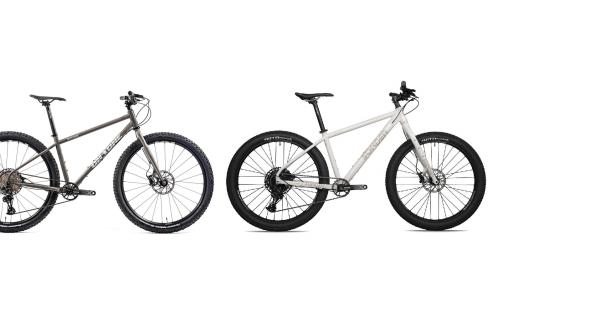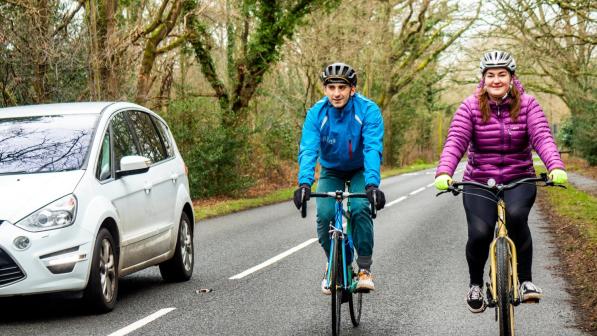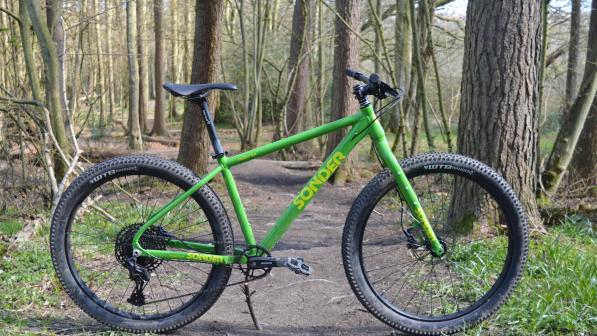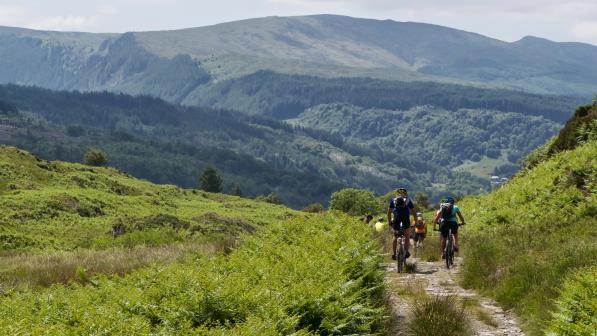Bike test: Rigid mountain bikes

Before we start, let’s get one thing straight: if you want to ride as fast as you can down technical trails, a full-suspension bike will enable you to do that quicker and with more control. If that isn’t your main aim, there’s a simpler way to ride off road: rigid. It isn’t necessarily the bruising experience you might expect.
A decade ago Surly launched the first plus bike, the Krampus. It wasn’t a fat bike, more a 29er on steroids – thus 29+. Its 3in tyres gave better bump absorption and the larger overall wheel diameter even better rollover.
Too ‘out there’ for the fashion-focused cycling world, its influence can nevertheless be seen in the drift towards 2.5in and 2.6in tyres; bigger but not intimidatingly bigger. It’s like when 650B bikes took off after 29ers challenged 26ers: two steps forward, one step back.

Plus bikes are still around, both in larger (29×3) and smaller (27.5×2.8in) wheel sizes, and with and without suspension. They remain fairly niche and the tyre options – particularly in 29×3 – have narrowed. Yet I don’t see them disappearing. Like fat bikes, they suit some cyclists and some kinds of cycling too well.
The Krampus is still here too. Compared to the one we reviewed in Feb/Mar 2013, the current model has some modest geometry changes, such as ~1cm shorter chainstays, a slightly steeper seat angle, and a marginally slacker head angle. It’s also compatible with prevailing axle standards, an internal dropper seatpost, and more luggage options.
As well as the rigid version on test, it can be bought (£2,699.99) with a 120mm RockShox 35 Gold RL fork and a TransX dropper post.

Jeff Jones has been building rigid bikes exclusively since the noughties, developing different geometry and components such as his eponymous H-bars to optimise the ride. Plus tyres on wide rims (29+ or 27.5+, depending on the model) were the last piece of the puzzle and have replaced standard 29er wheels on his bikes. These range from titanium space-frame models with truss forks to diamond frame steel ones.
Note that Jones dealers in the UK don’t sell complete bikes. You can buy a frameset here but bikes are shipped from the USA.
Frame and fork: Jones
The Jones rips up received wisdom on mountain bike geometry, which favours really slack head angles, less fork offset, steeper seat angles, longer top tubes, and shorter chainstays. All that works fine for a certain kind of off-road riding but it’s predicated on suspension. The Jones is designed to be ridden rigid. Even if you could find a suspension fork to fit its straight 1 1/8in head tube, there would be little point.
Instead of tipping you forward to ‘ride the fork’, the Jones sits you up and back, more like a Dutch roadster. The idea is that your hands just rest on the handlebar rather than supporting your bodyweight. Your legs take your weight and do the business of absorbing bumps when you’re riding out of the saddle.

The Jones is relatively short between saddle and handlebar. The medium size Plus LWB has an effective top tube length of 585mm, which is about 25mm shorter than a typical medium size MTB and shorter still than ‘long, low, slack’ ones. It feels even shorter because of the backswept Jones H-bar on a tall steerer. But it’s not a short bike.
The front centres distance is 25mm longer than the already roomy Krampus, due to a slacker head angle and a huge amount of fork offset. And the chainstays are really long too. It’s a big bike that looks like it might handle like a barge. It doesn’t: it’s quite agile, due to having less trail.
The chromoly frame and fork have fittings for racks, bags, bottles and mudguards. The only thing missing is a port for an internal dropper post. So you can only run an external dropper, and only one that fits a 27.2mm seat tube. I’d have preferred a 30.9 or 31.6mm seat tube, which could be shimmed down to fit a narrower, more compliant rigid post for those who don’t want a dropper.

The Jones fork uses a screw-thru 150mm hub, like fat bikes. This means a stronger and laterally stiffer front wheel as the spokes have a better bracing angle. (Think of a tent’s guy ropes.) A wider hub means a wider fork and so loads of room for 3in tyres. You’d easily fit a 29×3.25in tyre front or, indeed, rear. And you could fit mudguards over these 3in tyres, if you can find any large enough.
Frame and fork: Krampus
The Krampus is variously referred to as a trail bike and an adventure bike. It’s both.
The head tube and seat tube angles are conservative compared to on-trend mountain bikes. But huge 29×3 wheels don’t get deflected off line as easily so an enormous trail figure from a super slack head angle isn’t required. And a less extreme seat angle is better for riding comfort with a rigid fork, as it prevents you piledriving the fork into bumps.
The seat angle, like that of the Jones, is approximate because the seat tube is kinked. Your effective seat angle will depend how high you set the saddle, as it rises at a shallower angle than a straight line between bottom bracket and seat tube top. The kinked tube helps Surly bring the back wheel in closer but also limits how far (or whether) you can lower a rigid post. Fortunately it will run an internal dropper.
The dropouts are Surly’s attempt to solve the axle standards conundrum. Called ‘Gnot-Boost’, they’re spaced at 145mm. As the frame is steel, the dropouts can be spread to fit a 148×12mm Boost hub or squeezed in to fit a 142×12mm hub. Either way, each side only moves 1.5mm.
There are adapter washers available to run a 135×10mm QR hub too. The dropouts are rear facing so the Krampus can be run singlespeed or hub-geared without a tensioner.
At the front, the Krampus’s 44mm head tube will accommodate either a straight steerer (as fitted) or a tapered steerer, found on most rigid carbon forks and suspension forks. You just need the right headset. The fork is 498mm axle-to-crown so can be swapped for a 100mm or 120mm suspension fork.
Like the Jones, the Krampus bristles with threaded fittings for mudguards, racks, bottles, and bikepacking cages. It’s not pitched as “the only bike you need” like the Jones but it could be. I considered both bikes for my one-bike-for-everything feature a few years ago.
Components
Neither bike has a dropper post, which you’ll likely want for more technical terrain. A dropper is more important on a rigid bike than one with suspension because your arms and legs have more work to do soaking up bumps, and they can’t do that properly if you’re stretched out, hanging off the back of the saddle.
Gearing is basically the same on both bikes: 1×12 SRAM SX Eagle with an 11-50t cassette. The Jones gets a more suitably sized 30t chainring, while the Krampus has a 34t ring that’s uncomfortably close to the chainstay. (You can fit up to 38t on the Jones.) The budget version of SRAM’s Eagle groupset works okay but I’d prefer Microshift Advent X, which is 10-speed and has a nicer derailleur.

The Jones has mechanical disc brakes, the Krampus hydraulics. I preferred the mechanicals: they’re Avid BB7 MTN with compressionless cables and huge rotors. There’s loads of stopping power and they’re easier to service. Others will prefer the SRAM Level brakes of the Krampus: they’re quieter and more smoothly modulated.
The big tyres on wide rims that both bikes have take some getting used to. Pressure is key. Just 1 or 2psi can make a significant difference when you’re running only 10-15psi.
Too hard and you’ll Space Hopper off rocks and roots; too soft and you’ll ding rims. Get it right and you’re rewarded with a floated ride that smooths out trail ‘chatter’ and has lots of traction. Rolling performance is good everywhere except on fire road climbs and tarmac.

The Vee Tires of the Jones roll better due to a more multi-purpose tread pattern and the fact that they were set up tubeless (with, unusually, tubeless schrader valves). The Dirt Wizards of the Krampus grip much better in British winter mud, however, finding traction where the Jones fishtailed. Running them tubeless would save weight (29+ tubes are heavy) and improve the ride.
Ride
They’re both substantial bikes with a lot of weight in the wheels. Sudden accelerations and charging up climbs are not their forte. Conversely, they hold their speed well, particularly through corners and over loose and rough surfaces. And it takes a lot to baulk these big wheels altogether.

Stutter bumps slow any rigid bike, even ones with monster-truck tyres. The Jones does better, rolling easily over fist-sized rocks and roots because your bodyweight isn’t bearing down on the front wheel. At the bottom of the choppiest descent I rode, my hands felt fine: no aches, no buzzing. Upper body comfort is better on the Jones than on any suspension bike I’ve ridden.
Hand comfort could be improved on the Krampus with different grips (ESI Chunky? Ergon?) and bar ends. A shorter stem would help too, to sit you up more. You might even fit a Jones handlebar, perhaps with a taller stem. Or you could fit a suspension fork…

On slow technical features, both bikes perform well. Weight shifts and steering feel aren’t affected by suspension compression, so you can place either bike precisely.
The Jones was more assured over jumps and drops mainly because I could (slowly!) lower its saddle by 8cm before attempting them; the Krampus’s wouldn’t go lower. Additionally, the Jones H-bar works well for descending on a rigid bike, letting you get your centre of gravity further back without stretching your arms.
A high, backswept bar isn’t so good for athletic climbing. You can sit and spin, and you can pedal standing up well on any rigid bike, but you can’t bring your upper body into play like you can with a lower, wider flat bar. Softer, wider tyres do provide more traction when climbing, so even heavy bikes like these will get you dab-free up most slopes if you dig in.
Verdict
The Jones Plus LWB is to other mountain bikes what a touring bike is to a road bike: heavier, more upright, more comfortable, more versatile. It’s less a bike for chasing Strava times than for cruising through the countryside – over any distance and any trail, however technical.
Its main drawback isn’t its weight, though that will bother some, but its cost. Factor in shipping, import duty, and VAT and you’re looking at around £3,500! I’d imagine most British customers will buy and build up a frameset instead.
The Surly Krampus is, in this company, fairly conventional. What differentiates it from other mountain bikes are the 29+ wheels and the frame fittings. But those alone give it a very different ride and more potential to be used in different roles.
As a bikepacking bike, an alternative handlebar setup would help – maybe a Surly Moloko or On-One Geoff. As a trail bike, I think it would be best bought either as the suspension fork version or as a frameset to build up into a livelier, lighter weight rigid bike.
Other options
Trek 1120 £3,250

The last remaining 29×3 model in Trek’s line-up is explicitly a bikepacking bike. It has an aluminium frame, carbon fork and removable bespoke racks.
Bombtrack Beyond+ £1,750

Smaller wheels – 27.5×2.8in – but the same idea: an MTB with bikepacking frame fittings. Reviewed in the June/July 2022 issue of Cycle magazine.





